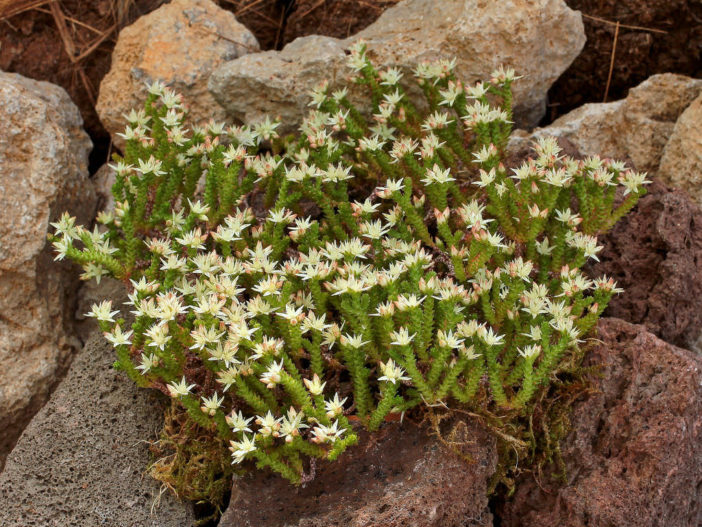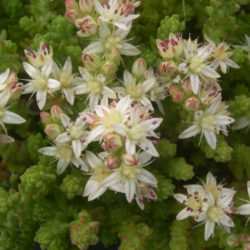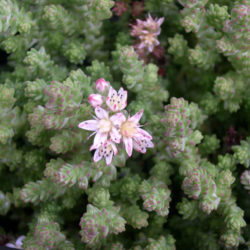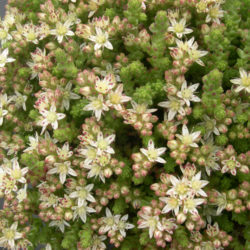Scientific Name
Sedum moranense Kunth
Common Name(s)
Red Stonecrop
Synonym(s)
Sedum moranense subsp. moranense, Sedum arboreum
Scientific Classification
Family: Crassulaceae
Subfamily: Sempervivoideae
Tribe: Sedeae
Genus: Sedum
Etymology
The specific epithet "moranense (mor-an-EN-see)" refers to the Moran Mines in Mineral del Monte near where Alexander von Humboldt (1769-1859) and Aimé Bonpland (1773-1858) collected this species.
Origin
Sedum moranense is native to Mexico. It occurs in forests and scrublands at elevations that range from 6,890 to 10,040 feet (2,100 to 3,060 m).
Description
Sedum moranense is an attractive succulent subshrub with spreading, much-branched stems and small, spirally arranged leaves. It can grow up to 6 inches (15 cm) tall. The bright green leaves and stems take on pink or red hues in cooler weather, eventually turning bright maroon if temperatures are cold enough.
The tiny flowers are star-shaped, white to reddish-white, and appear in clusters at the tip of the stems in midsummer.

Hardiness
USDA hardiness zones 5a to 9b: from −20 °F (−28.9 °C) to 30 °F (−1.1 °C).
How to Grow and Care
When growing Sedums, keep in mind that these plants need very little attention or care. They will thrive in conditions many other plants thrive in but do just as well in less hospitable areas. They are ideal for that part of your yard that gets too much sun or too little water to grow anything else. A common name for Sedum is Stonecrop because many gardeners joke that only stones need less care and live longer.
Sedum is easily planted. For shorter varieties, simply laying the plant on the ground where you want it to grow is usually enough to get it started there. They will send out roots from wherever the stem touches the ground and root itself. If you want to ensure that the plant will start there, you can add a very thin soil covering.
You can break off one of the stems for taller varieties and push it into the ground where you want to grow it. The stem will root very easily, and a new plant will be established in a season or two.
See more at How to Grow and Care for Sedum.
Links
- Back to genus Sedum
- Succupedia: Browse succulents by Scientific Name, Common Name, Genus, Family, USDA Hardiness Zone, Origin, or cacti by Genus
Photo Gallery
Click on a photo to see a larger version.


